Originally published Nov. 30, 2017 in Forbes.
Tara Haelle , CONTRIBUTOR
Increasing the amount of physical activity children and teens get each day can boost academic skills, found a new study that analyzed past research on the topic. Students’ math, reading and language skills showed improvement in most studies when students participated in school programs that increased their physical activity up to an hour a day.
“Overall, with this review, we show that physical activity programs significantly benefit multiple facets of academic achievement: mathematics-related skills, reading and composite scores,” wrote Celia Álvarez-Bueno, MSc, of the Universidad de Castilla-La Mancha in Cuenca, Spain, and her colleagues in the journal Pediatrics. “Additionally, we show that classroom behaviors are improved after physical activity interventions.”
 The authors combed through five databases of medical research to look for studies through October 16, 2016 that examined associations between physical activity and school achievement. They only chose studies with healthy, developmentally typical children and teens who participated in a program specifically intended to enhance or enrich kids’ current levels of physical activity.
The authors combed through five databases of medical research to look for studies through October 16, 2016 that examined associations between physical activity and school achievement. They only chose studies with healthy, developmentally typical children and teens who participated in a program specifically intended to enhance or enrich kids’ current levels of physical activity.
The researchers identified 26 studies which involved a total of 10,205 children, ranging from 4 to 13 years old. The studies came mostly from the U.S. and Europe along with a handful from Australia, Canada, India and South Africa. Each study involved a different intervention, but they shared similar goals: increasing children’s physical education, adding classroom-based physical activity during lessons (being physically active while learning a specific subject) or providing extracurricular or after-school opportunities for physical activity. Participants in the studies increased their physical activity by 10 to 60 minutes a day, depending on the study.
All but three of the studies also reported on effects of the physical activity programs on academic work, including language, vocabulary, spelling and writing as well as math, science and social studies. In 13 of the 18 studies looking at math, students improved their math skills, especially in studies that involved more intense physical activity and were taught by trained or specialist teachers.
In half of the 10 studies looking at reading, children involved in the physical activity programs saw their reading skills improve. Again, the biggest improvements were seen in programs where a trained instructor led the physical activity program. Similarly, four of 10 studies looking at language skills found improvement in the groups with greater physical activity.
Five of the studies looked at how well students stayed on task and all but one found improvement among the children involved in the physical activity programs. (The improvement for all of these findings was measured in specialized statistical scales that mean little without knowledge of the statistical tools.)
The variety of the studies and small populations in several of them made it difficult for the researchers to pinpoint specifics on the time of day and type of programs that helped most.
“The school time when the physical activity interventions took place has some influence on these effects, in such a way that curricular PE lessons seem to be the most appropriate framework to improve children’s academic achievement, although integrating physical activity in classroom lessons also benefited mathematics-related skills,” the authors explained. “On the other hand, because of the scarcity of studies in each group, we could not determine which characteristics of the physical activity interventions (enriched, enhanced, or both designs) are associated with higher effects.”
They noted previous research finding that increasing students’ physical activity time each week either helps them academically or at least does not harm their achievement—even if the students end up with less time for studying.
“With our meta-analysis, we support the idea that children’s academic achievement and classroom behaviors improve after increasing the school time dedicated to PE and that the performance in some subjects, such as mathematics, could be improved by integrating physical activity programs into lessons.”
They also noted the long-term value in getting kids to integrate physical activity in their regular routines.
“Children’s and adolescents’ healthy habits tend to persist through life,” the authors wrote. “In this sense, this study should be jointly considered with previous research aimed to support that the schools are an ideal setting for promoting healthy behaviors. Among these, the promotion of physical activity is an effective tool for improving children’s physical and mental health and also enhancing academic achievement.”
My book, The Informed Parent, with co-author Emily Willingham, is now available. Find me on Twitter here.


